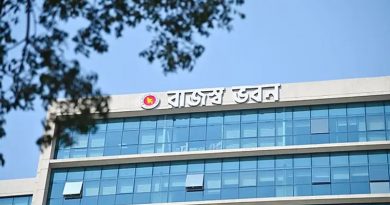A new report by the International Monetary Fund (IMF) has revealed a striking imbalance in Bangladesh’s electricity subsidy system: 54% of the benefits go to the country’s top 40% income earners, rather than the low-income groups the subsidies are intended to support.
Key Findings
- Subsidy Inequity: High-income households—typically residing in larger homes and using more electricity due to ownership of air conditioners and other appliances—receive a disproportionate share of subsidies.
- Household Consumption: Over 70% of electricity subsidies are directed to households, but the distribution heavily favors affluent users.
- Fiscal Pressure: The findings come amid intensifying pressure on the government to reduce fiscal burdens and reform its energy pricing framework.
IMF Recommendations for Reform
The IMF outlined a two-pronged action plan: improve the targeting of subsidies and reduce long-term fiscal pressure. Their proposals include:
- Geographically Targeted Tariffs
- Lower rates for residents of poverty-prone regions using poverty mapping by the Bangladesh Bureau of Statistics (BBS).
- Subsidy Targeting via Social Registry Integration
- Connect subsidy allocation to national social registries and utility billing systems to better identify vulnerable households.
- Pilot in Rural Areas
- Begin implementation in low-density rural regions where vulnerability is easier to assess and monitor.
- Adjust Pricing Models
- Annual power tariff reviews based on cost-plus methodology.
- Refine energy accounting and monitor demand patterns to shape more equitable pricing.
- Strengthen Regulatory Oversight
- Expand the mandate of the Bangladesh Energy Regulatory Commission (BERC) to include PPA reviews, investment coordination, and consumer protection.
Underlying Issues Driving Costs
The IMF attributes Bangladesh’s high electricity generation costs to a combination of structural inefficiencies:
| Contributing Factors to High Power Costs | Description |
|---|---|
| Demand Forecast Errors | Overestimated demand has led to expensive overcapacity |
| Non-competitive Power Contracts | Contracts awarded without bidding inflated generation costs |
| Fuel Dependency | Heavy reliance on costly, imported fuels |
| Lack of Coordination | Weak coordination across generation, transmission, and fuel delivery |
| Currency Depreciation | Rising import bills due to taka devaluation |
Action Plan to Reduce Subsidy Burden
Short-Term Measures
- Set a roadmap for subsidy reduction aligned with a tariff adjustment schedule
- Improve fuel supply management and ensure efficient use of existing infrastructure
- Develop a dynamic Power Sector Model to track finances and planning needs
Long-Term Strategy
- Integrate planning across generation, transmission, and gas distribution to minimize redundancy
- Retire aging and inefficient power plants
- Address transmission and gas supply bottlenecks with strategic investment
Reactions and Outlook
Energy experts, including the Consumer Association of Bangladesh’s energy adviser M Shamsul Alam, endorsed the IMF’s findings. He noted that CAB has long pushed for targeted subsidies to ensure support reaches the most vulnerable.
The IMF’s proposals come at a crucial time as Bangladesh grapples with rising fiscal stress and looks to make power sector spending more efficient and equitable.






